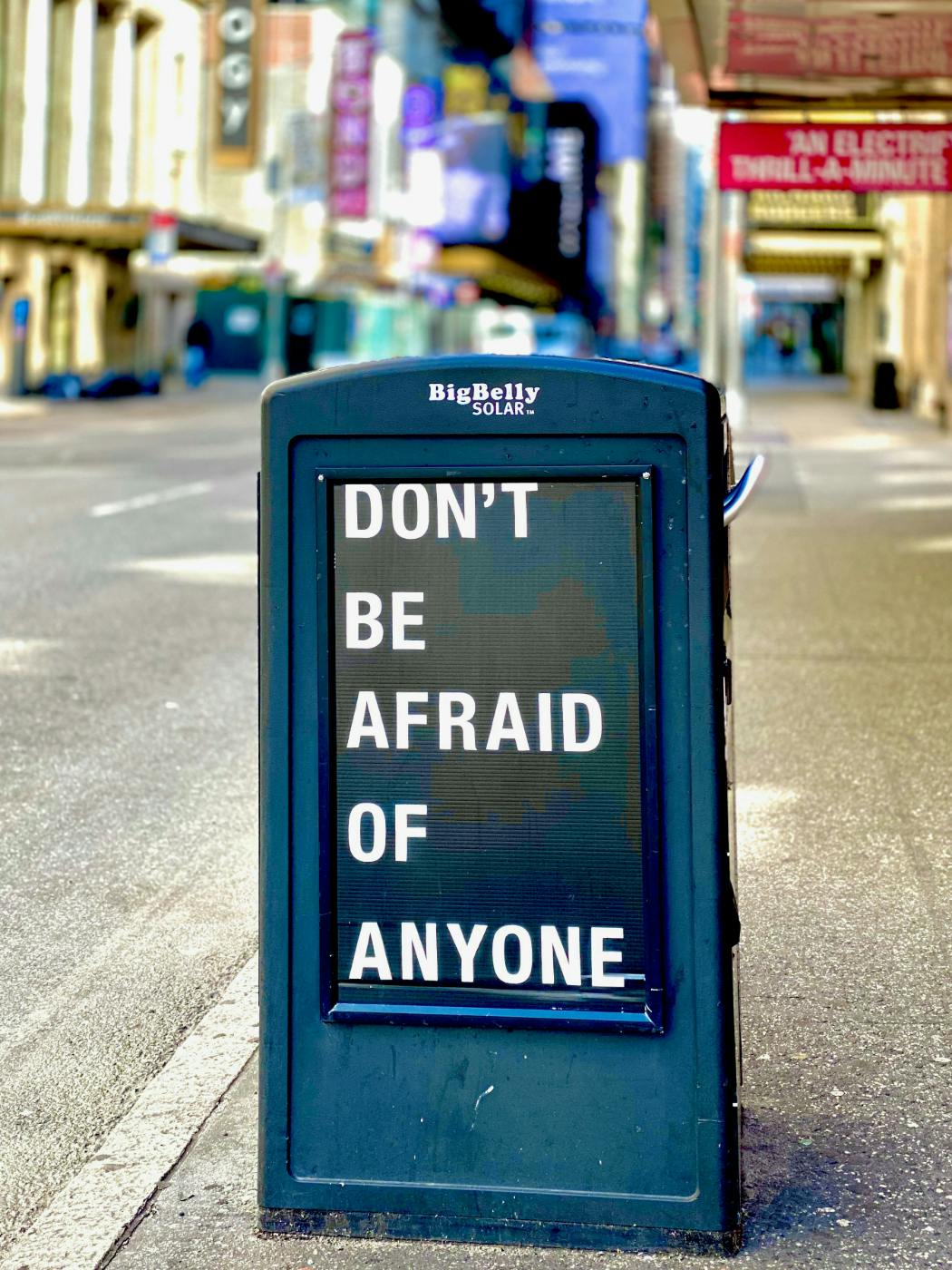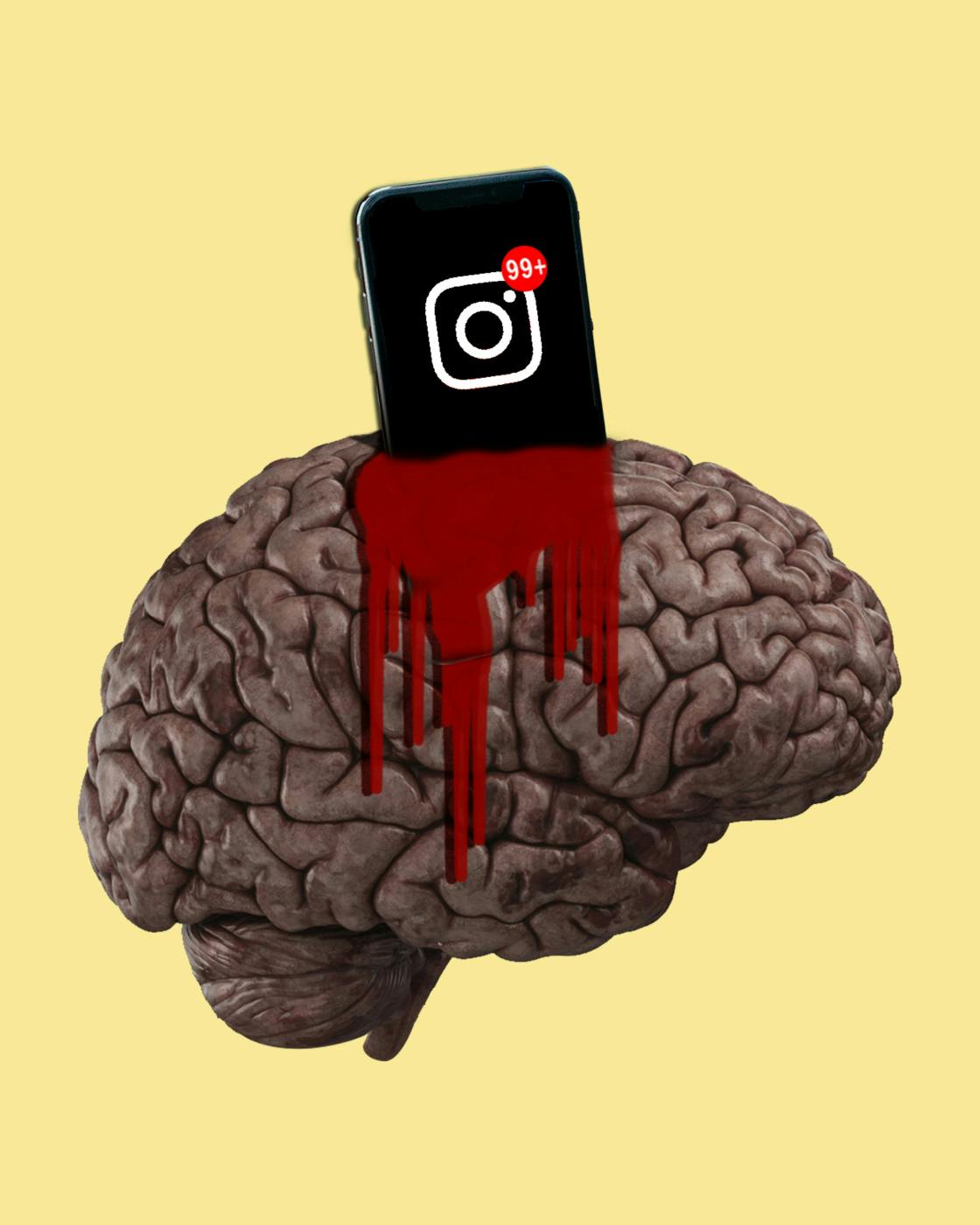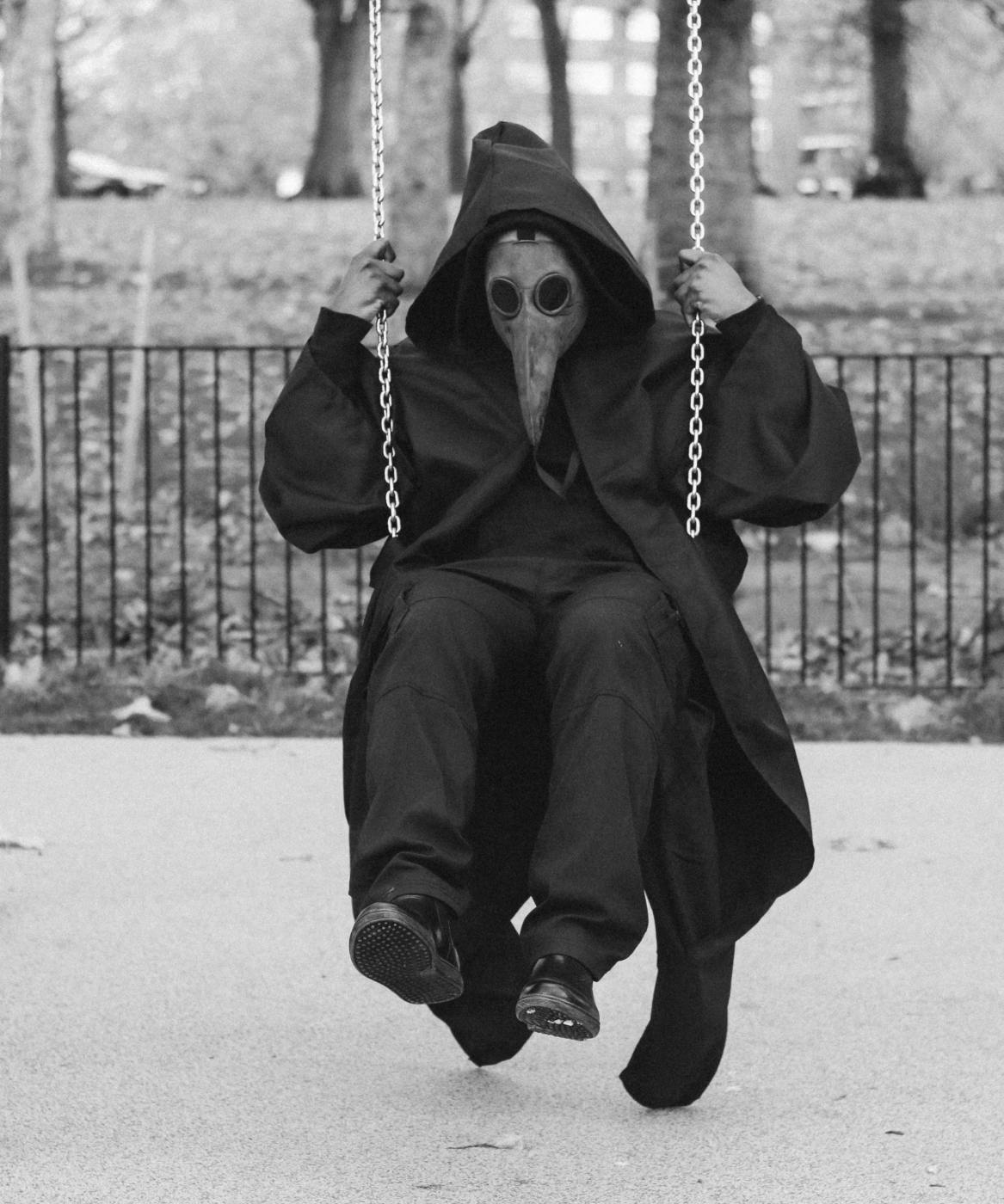
Fear is one of the most primal emotions, and it’s also one of the most powerful motivators when it comes to consumer behavior. Brands have long recognized this, using fear to spark immediate reactions and prompt people to act quickly.
The Fear Factor of Branding: How Late-Night TV Gets It Right (and Wrong)
Has this ever happened to you? A late-night feast of hot wings will not allow you to be supine for more than a few seconds before your entire gastrointestinal tract stages a coup and tries to vacate your body. Unable to sleep, you sit up and watch bad late-night TV. Not even streaming stuff, basic cable that redefines the word basic. There you sit with the one huge glowing eye filling your room with bluish light, and one after another, the commercials roll. But there’s something weird about those commercials. There’s no happy faces biting into a juicy burger or kids halting their play for a juice box. No, late-night commercials are all doom and gloom. Every practicing announcer says things like, “If you’re over fifty and you’re not taking Pillcurit, you will die.” By the time your stomach has signed a peace accord with your colon, you’ve seen ten thousand one-minute spots all enumerating the ways you’re about to die if you don’t do this, take that, drink this concoction, or buy these pills. You go to bed finally, but your mind is racing with fear. Lots of fear.

The Psychology of Fear in Marketing
Fear is one of the most primal emotions, and it’s also one of the most powerful motivators when it comes to consumer behavior. Brands have long recognized this, using fear to spark immediate reactions and prompt people to act quickly. The reason fear works so well is that it taps into our survival instincts, triggering responses that are hard to ignore.
1. The Fear of Missing Out (FOMO)
FOMO has become a massive driving force behind many consumer decisions. The fear that if we don’t act now, we’ll miss something important, exciting, or valuable, can push people to make quick, often irrational decisions. This isn’t just about missing out on products—it’s about missing out on the perception of success or belonging. In other words, consumers don’t just fear the loss of a product, but the social and emotional loss that might come with it.
To understand why this is so powerful, think about the psychology behind it. Humans are social creatures who are wired to fit in and belong. When we see others doing something or obtaining something, it activates our desire to be part of that group or not to fall behind. This is why FOMO is so effective in social media-driven marketing. Limited-time offers, countdowns, and exclusivity not only drive scarcity but also tap into the fear of exclusion, making people act without fully considering their options.
But here’s where the danger lies: FOMO can be manipulative. When marketers play into this fear without being upfront or transparent, it can lead to impulse purchases that people later regret, realizing that the "urgency" was artificially constructed to drive immediate sales. For example, you might receive a text saying, “Only 5 spots left at this price—sign up now before it’s too late!” This creates an artificial rush, even when there’s no actual rush, convincing you to act on impulse rather than logic.
2. Tapping Into Our Survival Instincts
Fear-based advertising doesn’t just make us feel like we’re missing out; it can make us believe we’re in imminent danger. This taps into our most fundamental survival instincts. Our brains are wired to respond to threats quickly—this is a holdover from ancient times when reacting to danger was a matter of life or death. Advertisements that play on this instinct are often the most alarming.
Take, for example, an ad for a home security system. These commercials don’t just show a house with a simple “For Sale” sign outside—they often depict a terrifying scenario where burglars break into the home, ransacking it while the family sleeps. This strategy doesn’t just aim to sell a product; it creates a high-stakes scenario where the viewer feels like their own home is in danger.
This plays on the basic human need for safety. In the digital age, marketers have mastered the art of using these survival instincts to their advantage. They’ll show images of car crashes, accidents, or home invasions, accompanied by the message: "Without this product, this could happen to you." It’s not about presenting a rational argument; it’s about creating an emotional response that makes the product feel like a lifeline.
What makes this strategy particularly effective is that it doesn’t need to be accurate to work. The exaggerated fear of "what could happen" is enough to push someone into making a purchase. After all, who wants to take chances when the possibility of harm is presented so vividly?
3. The Power of Exaggerated Consequences
While survival instincts tap into a very basic form of fear, exaggerating the consequences of inaction brings things to the next level. By amplifying the worst possible outcome, advertisers are able to play on the human tendency to catastrophize. This works especially well in sectors like health, insurance, and pest control.
The idea is simple: The more extreme the consequence, the more urgent the response needs to be. If an ad can convince you that your entire life could be ruined because of inaction, you’ll be much more likely to buy into the product.
A prime example would be the pest control ads I mentioned earlier. These often depict an infestation of termites or rodents as a ticking time bomb waiting to destroy your home. The ad doesn’t just show a couple of pests; it implies a full-blown disaster is waiting to happen unless you act. This makes the viewer feel like they have no choice but to take immediate action to prevent total destruction.
The exaggeration of consequences also plays into the idea of “regret aversion.” Consumers are terrified of making the wrong decision, and brands know this. By exaggerating potential consequences, marketers tap into the fear of future regret, making you feel like you’d be foolish not to act now. "If you don’t buy this product, you could lose everything" is a sentiment that is often echoed in such ads, creating an overwhelming need to make a decision fast.
The thing is, these tactics work. They tap into our most primal fears, making us feel as if we don’t act immediately, we’re doomed. But while fear is an incredibly effective motivator, it’s not always the most honest one. So, how do these fear-based techniques actually play out in real-world examples? Let’s dive into some specific case studies of brands that are masters of fear-based marketing—and how they’ve used it to their advantage.

Examples of Fear-Based Branding
1. Insurance Ads
Insurance companies are some of the most skilled at using fear-based marketing. They play on one of our biggest fears—the fear of losing everything. Whether it’s life insurance, health insurance, or home insurance, these ads often feature worst-case scenarios to push the message that without their service, catastrophe is imminent.
Take life insurance commercials, for example. They typically depict a sudden tragedy, like an unexpected death or severe illness, followed by a family left with no financial support. The ad doesn’t just stop at showing the problem—it amplifies it. “Without life insurance, your family could be left destitute,” the announcer warns, implying that the viewer’s loved ones could be doomed to financial ruin if they don’t buy the policy right away.
These ads are effective because they trigger the viewer’s survival instincts—no one wants to imagine the worst happening to their family. But it also raises the question: How much of this is realistic, and how much is exaggerated to play on emotions? The need to buy insurance is often framed as urgent—if you don’t act now, you’re putting yourself and your family at risk.
2. Health Supplements
Health products, especially those marketed to older adults, often use fear to convince people they need a specific pill or remedy. The focus isn’t just on feeling good—it’s on avoiding the worst possible outcome. Ads for supplements that claim to prevent heart disease, stroke, or dementia often feature images of the diseases themselves, accompanied by dire warnings about what could happen if you don’t act.
An example of this is the "miracle cure" supplements that promise to prevent heart disease. The ad may show a person collapsing from a heart attack, followed by a message that implies: "Without this supplement, you could face the same fate." Here, the fear of sickness and death is used to create a sense of urgency and necessity. But the exaggerated portrayal of health consequences can be misleading, pushing viewers to act out of fear rather than informed choice.
It’s interesting to consider how these products market themselves. The fear they generate often makes the viewer feel like their health is at immediate risk, even if the product may not be as effective as the ad suggests. The tactics play into the uncertainty of health and aging, suggesting that inaction could lead to irreversible damage.
3. Financial Services
Fear is also a driving force in the world of financial marketing. Ads for retirement planning, investment opportunities, or credit services often focus on the consequences of not acting fast enough. A common theme here is financial security, particularly the fear of not having enough saved for the future. These ads often portray the idea that if you don’t start planning now, you’ll end up in a dire situation, like being forced to work in your old age or living in poverty.
One familiar type of financial ad is the one where the viewer is shown an older individual, looking frail and stressed, with the narrator saying something like, “If you don’t start saving for retirement today, this will be your future.” This creates an image of a person facing financial ruin in their later years, prompting the viewer to take action before it’s too late.
These fear-driven ads often exaggerate the consequences of not planning ahead, making the viewer feel that unless they invest in the product right now, they’ll inevitably end up struggling. The push is immediate and intense, causing people to make financial decisions based on anxiety rather than strategic planning.
4. Pest Control and Home Maintenance
The fear of losing one’s home or facing an infestation is a classic example of exaggerated consequences in advertising. Many pest control companies use alarming imagery to scare viewers into acting fast. Imagine a commercial where a home is shown being overtaken by termites, slowly eating away at its structure, followed by a message like, “If you don’t treat your home now, it could collapse.” This creates an overwhelming sense of urgency—who wants to risk their home falling apart?
In these cases, the product isn’t just being sold—it’s positioned as a life-saving intervention. The exaggerated risk of infestation or structural damage due to pests makes the product seem indispensable, even if the actual risk is relatively low. The implication is that if you don't act, you could face catastrophic consequences.
These examples demonstrate how fear can be used to not only sell products but also manipulate the emotional responses of consumers. But as with any marketing strategy, it’s not without its ethical implications. Are these ads really protecting consumers, or are they simply preying on their anxieties to make a quick sale?
Now that we’ve explored some of the big players using fear-based tactics, it’s time to take a step back and ask: Is it effective? Or does it leave us feeling manipulated? What does this mean for the future of branding? Let’s unpack that next.

Is Fear-Based Marketing Effective?
Fear-based marketing is undeniably powerful, but its effectiveness can be a double-edged sword. On one hand, it creates an immediate emotional response that can drive quick action, which is why it’s so commonly used in advertising. On the other hand, when overused or misused, it can lead to negative perceptions of the brand, alienating customers and even creating long-term distrust.
1. The Urgency Factor
When fear is used in advertising, it often creates a sense of urgency—you must act now or face dire consequences. This urgency can be incredibly effective for driving quick conversions. For example, ads that promote "limited-time offers" or "last-minute deals" capitalize on our fear of missing out on something valuable. This pushes consumers to make purchases quickly, often without fully considering the decision.
However, while urgency can create short-term sales spikes, it doesn’t always lead to long-term customer loyalty. The problem with this type of marketing is that once the urgency is over, the emotional drive dissipates. Consumers may feel regret after acting impulsively, leading to buyer’s remorse. Brands that rely too heavily on fear may only see one-time customers, rather than building a lasting relationship with their audience.
2. The Risk of Overuse
Using fear as a tool in marketing can be highly effective, but if it’s overused, it can backfire. Consumers may eventually grow desensitized to these types of ads, which would lessen their impact. Additionally, if fear-based tactics feel too manipulative or exaggerated, it can breed resentment toward the brand.
Take the financial services industry, for example. Ads that repeatedly highlight financial ruin if you don’t act now might eventually push consumers away, as they begin to recognize the manipulation at play. The initial urgency created by fear may lose its power as consumers start questioning whether the product or service is really necessary or if it’s just a ploy to drive sales.
3. Emotional Manipulation and Trust
The most significant risk of fear-based marketing is the potential erosion of trust. If customers feel they’re being emotionally manipulated, it can lead to negative associations with the brand. Consumers are becoming more aware of these tactics and may begin to feel that brands are preying on their insecurities or anxieties.
This is especially important in industries that require long-term customer relationships, like healthcare or insurance. If a brand continuously uses fear to push sales, it may create an environment of distrust. Customers may question the brand’s true intentions: Are they trying to help, or are they just capitalizing on fear for profit?
4. Fear with a Purpose: The Positive Side
That said, fear-based marketing isn’t inherently bad. In some cases, it can be used for good, especially when it aligns with a greater sense of responsibility. Think of campaigns that promote public health or safety, such as anti-smoking ads, driving safety campaigns, or environmental activism. These use fear not to sell a product but to encourage positive behavior change. The fear is real, and it’s based on actual consequences that are meant to drive social good.
For example, ads that show the dangers of texting while driving or the long-term health effects of smoking can use fear to raise awareness. These ads don’t aim to manipulate in a negative way; instead, they use fear to highlight consequences and encourage individuals to make better choices for their health and safety.

Fear in Social Media Marketing
Social media has become one of the most powerful tools in modern marketing, and with its instant reach and personal connection, it’s also a breeding ground for fear-based tactics. Unlike traditional forms of advertising, social media often thrives on creating urgency and driving behavior in real-time. Brands and influencers alike use fear to exploit the immediacy of the platform, preying on users’ anxieties to promote products, experiences, or lifestyles.
1. Fear of Missing Out (FOMO) Amplified
FOMO isn’t just a buzzword in the world of social media marketing—it’s the driving force behind countless campaigns. On platforms like Instagram, Twitter, and TikTok, the fear of missing out on the latest trend, meme, or exclusive offer is constantly stoked. With constant updates and a never-ending stream of content, social media keeps users in a perpetual state of catch-up, which marketers have learned to capitalize on.
From influencers posting "limited-time" discount codes to brands showcasing flash sales that only last for a few hours, the message is clear: If you don’t act now, you’ll miss something important. The rapid nature of social media means that opportunities feel fleeting, and this sense of urgency can prompt users to act impulsively, buying products or services in the moment without much thought.
2. The Anxiety of Comparison
One of the darker sides of social media is the constant comparison game it encourages. Users scroll through carefully curated feeds, comparing their lives, looks, and successes to others. This creates a sense of inadequacy and anxiety, as people feel they are falling behind or not measuring up to their peers.
Brands exploit this by showing highly stylized lifestyles or flawless aesthetics that suggest a life of perfection. The implication is that if you don’t have this product, you’re somehow missing out on the life you "should" be living. From beauty products that promise "perfect skin" to luxury brands that position themselves as markers of success, social media amplifies the fear of not being good enough, which fuels consumer spending.
3. Fear of Digital "Obsolescence"
Another form of fear that’s uniquely tied to social media is the fear of becoming irrelevant. As algorithms push new trends and content to the forefront, there’s an underlying anxiety that if you’re not "on top of it," you’ll be left behind. Social media thrives on trends that change rapidly, and users are often bombarded with posts about the latest viral challenge, fashion, or tech gadget.
This fear is especially evident among younger demographics, who may feel the pressure to constantly stay updated or else risk missing out on being "in the know." Marketers can exploit this fear by presenting products as the "next big thing" or "must-have" items that you’ll be left out of if you don’t act fast. The push is not just to buy but to remain relevant in a world that moves at breakneck speed.
4. The Influence of Social Media Influencers
Influencers on social media have become masters of FOMO, and many unknowingly use fear to fuel their marketing strategies. Whether it's an influencer promoting a product with the tagline "You won’t believe what this can do for you," or sharing a limited-edition item that "won’t last long," the pressure to act quickly is clear. Influencers capitalize on their relationship with followers, creating a sense of exclusivity and intimacy that makes the viewer feel they must keep up to remain part of the community.
This constant cycle of "exclusivity" and "insider knowledge" creates a fear of missing out, which is often coupled with the need to match the influencer’s perceived success or lifestyle. When an influencer shares a new product, a trip, or a life-changing experience, followers may feel an urgent need to buy into it as a way to keep up with the idealized lifestyle they see online.

The Fear of Social Media Manipulation
Fear is a powerful force in social media marketing, whether it’s FOMO, anxiety, or the fear of obsolescence. While it can drive immediate results, brands must be cautious in how they use these tactics. Over time, consumers may grow weary of feeling manipulated, leading to distrust and even resistance against fear-based messaging. Ultimately, while fear can be an effective short-term tool, it’s important for brands to build long-term relationships with their audiences by offering value, transparency, and authenticity rather than relying solely on fear-driven campaigns.
Summing Up: Fear in Branding—A Powerful Tool, But Use With Caution
Fear is undoubtedly one of the most powerful emotions a brand can tap into. It can drive immediate action, create urgency, and even trigger the impulse to buy or sign up before thinking things through. From the fear of missing out on a deal to the anxiety of losing safety, status, or financial security, fear-based marketing is a strategy that gets results, at least in the short term.
But as we’ve explored, this approach comes with its risks. While fear can drive conversions and keep people engaged in the moment, overusing it can lead to desensitization, resentment, and even mistrust. Consumers are becoming more attuned to emotional manipulation, and brands that rely too heavily on fear risk alienating their audience.
The key to successful fear-based marketing lies in balance. Fear should be used sparingly, paired with transparency and genuine value. When used responsibly, fear can inspire action without leaving a bad taste. It’s about creating a sense of urgency without overwhelming the audience or making them feel manipulated.
In a world where consumers are more aware and skeptical than ever, brands that succeed in the future will be those who use fear as a tool to empower, protect, and guide their audience, not to exploit or scare them into submission. After all, while fear may drive purchases, trust and long-term loyalty are what truly build lasting relationships.

